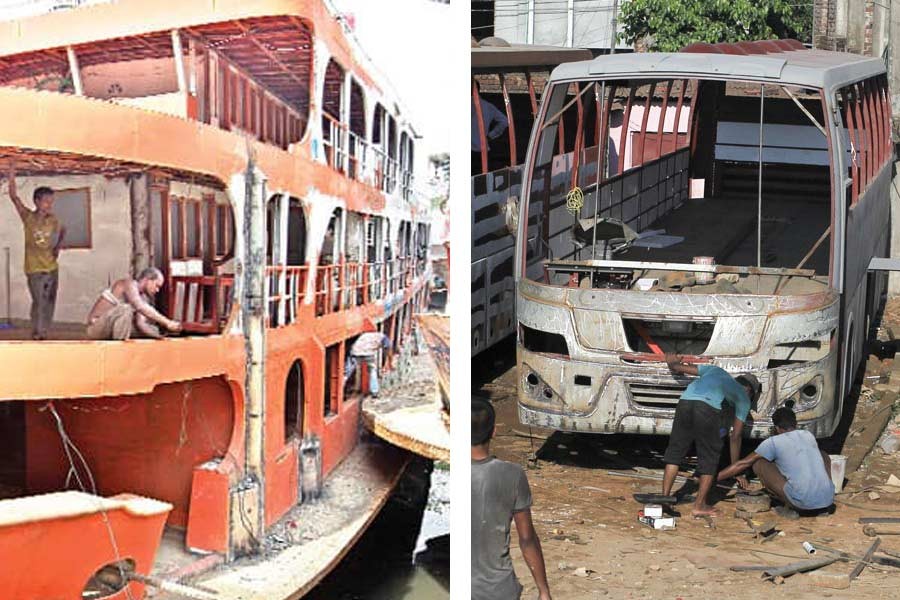
Published :
Updated :

If a picture expresses what thousands of words cannot, there were a few such select ones carried in quite a few newspapers published from the capital city. In one such picture, workers were applying finishing touches of paint to a couple of buses after repair and renovation. The new coat of paint is explicitly meant to pass the vehicles, long taken off the road, as road-worthy. Similarly, workers are busy repairing launches on the several repairing yards on the Keraniganj side of the Buriganga. The governing motive here is to take advantage of the rush of home-bound passengers during the Eid festival about two weeks away. This is, however, not for the first time that such tinkering with vessels and vehicles has gone on; it has been an annual phenomenon. People desperate to go home on the occasion of the two Eids hardly have any choice but to board any vehicle or vessel available. The owners and operators take an undue advantage of the deceptive new look of public transports.
That such malpractices can go on under the nose of the authorities concerned and the law enforcement agencies is mind-boggling. A report carried in a contemporary has claimed that almost 50 per cent of launches have no fitness certificate. Public buses may have a comparatively better record of fitness but still it is far from the desirable. The bus that killed a student of the Bangladesh University of Professionals (BUP) had no route permit for operation in the city. But this came to light on investigation after the accident. Similarly, another bus that met with a tragic accident at Fakirhat, Bagerhat on Saturday last had no fitness certificate but this has been made public only after the accident. Irregularities get detected only after accidents occur and people are crushed under the wheels.
The implication is quite clear: those who are responsible for monitoring the vehicles, rules and regulations for vehicles and vessels often turn a blind eye to malpractices. Launch repairing yards or workshops for buses are no small areas. They are located in open places. How can the fiddling with such transports go without detection? Had the authorities discharged their responsibilities according to the book, people would not have dared undertake such unlawful refurbishing of vessels and vehicles in such a blatant manner. It appears that those responsible for stemming the rot are abetting in it.
It is common knowledge that launch disasters become the cause of hundreds of people's death, turning a festival time into an occasion of national mourning. A number of fatal road accidents can sour the mood of the nation. This has happened in the past. Last year, however, things improved with no launch disaster and fewer road accidents. But if the lackadaisical buses and launches are refurbished with a coat of paint and pressed into service, the chance of accidents will increase by degrees. So, the need is to monitor such malpractices and bring an end to those before they snatch lives.


 For all latest news, follow The Financial Express Google News channel.
For all latest news, follow The Financial Express Google News channel.